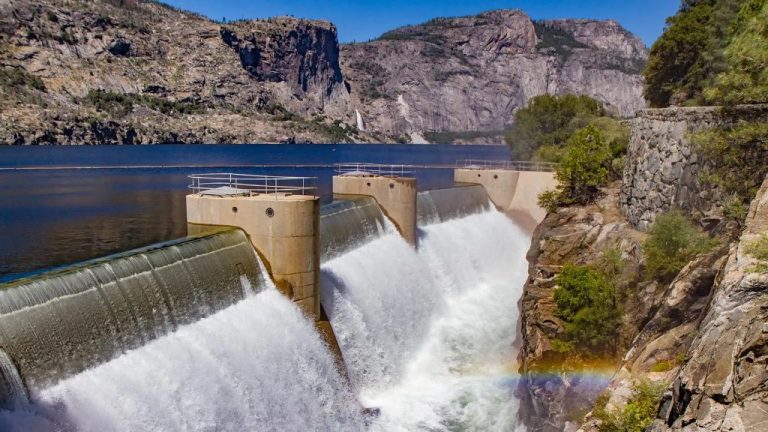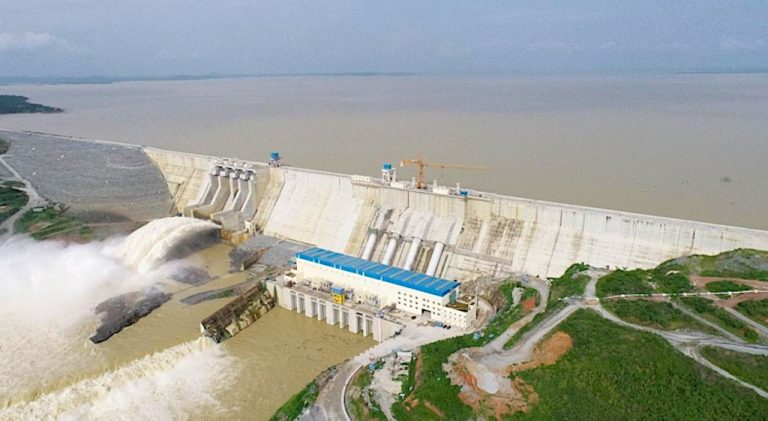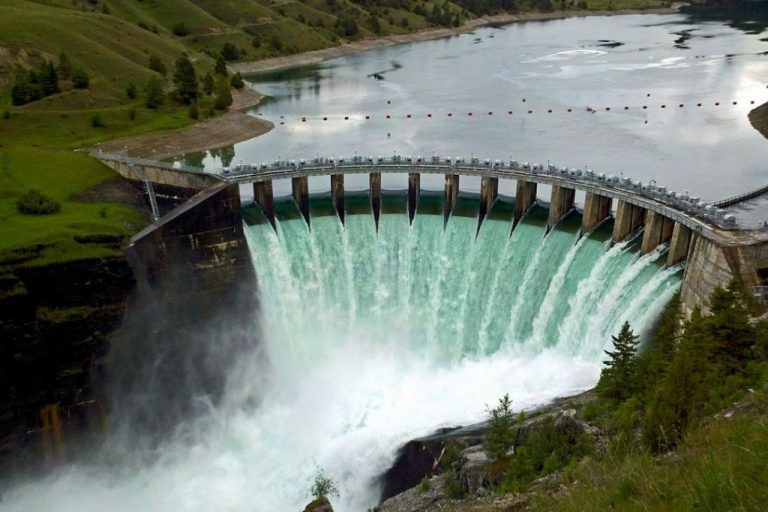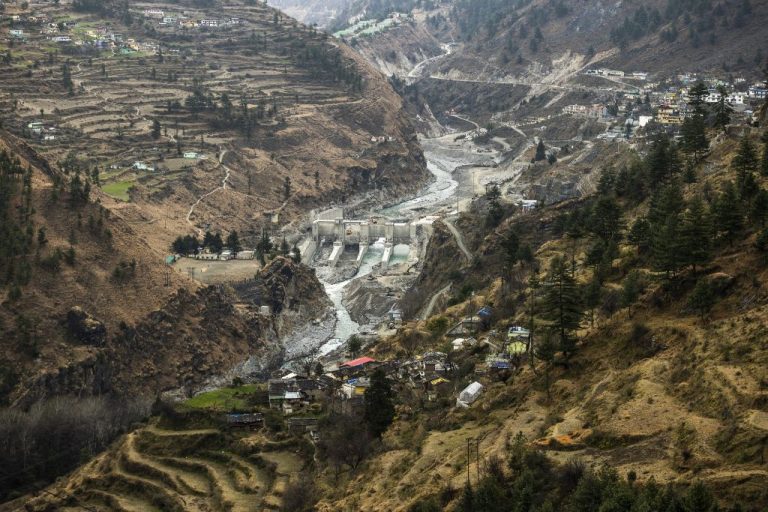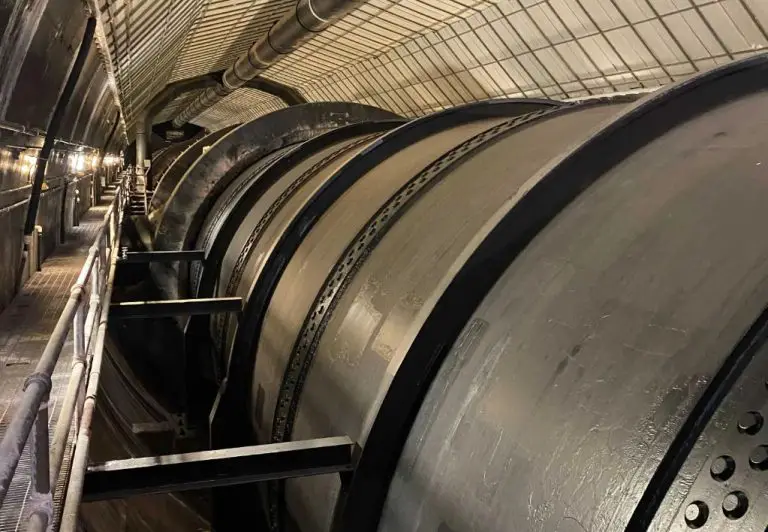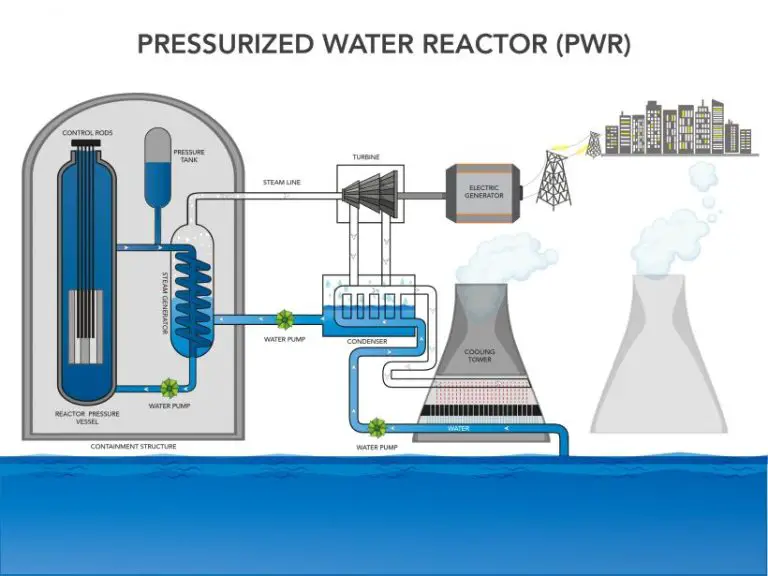What Is The Meaning Of Hydroelectric In One Word?
Introduce Hydroelectric Power
Hydroelectric power is a renewable energy source that converts the natural flow of water into electricity. It is also referred to as hydropower or hydro energy. The term “hydro” refers to water, while “electric” refers to electricity.
Hydroelectric power plants capture the energy created by flowing bodies of water to generate electricity. A dam is typically built to control the water flow and create a reservoir. The water in the reservoir has potential energy due to its height above the turbines. This potential energy gets converted into kinetic energy as the water travels through pipes and spins the turbines. The turbine rotation drives generators which converts the mechanical energy into electrical energy.
A major advantage of hydroelectric power is that it relies on the water cycle, which is continuously renewed by solar energy. This makes it a clean, renewable source of energy that does not produce greenhouse gas emissions.
The One Word Meaning
The one word meaning for hydroelectric is “hydropower”. Hydroelectricity refers specifically to the generation of electrical power by harnessing the natural flow of water. So in short, the term “hydropower” encapsulates the meaning of “hydroelectric” in just one word.
When we break down the term hydroelectric, “hydro” refers to water and “electric” refers to electricity. So hydroelectricity is using the power of flowing or falling water to produce electricity. Hydropower neatly sums this up into one single word – using water power to generate electricity.
So in essence, hydropower is the shorthand one word meaning that embodies the full concept behind hydroelectric. It succinctly communicates the notion of harnessing the kinetic energy of water flows to generate renewable electricity.
Early History
The first hydroelectric power plants were built in the late 1800s in both Europe and the United States. In 1878, the world’s first hydroelectric power plant began operation on the Fox River in Appleton, Wisconsin. This small 12.5 kilowatt plant powered a single paper mill and a home nearby. Soon after, in 1895, the first major hydroelectric power plant opened on Niagara Falls, providing electricity to areas of New York and Canada.
The early 1900s saw massive growth in hydroelectric power, especially in remote mountainous regions where transmitting electricity from distant coal plants would have been difficult. The invention of the modern turbine generator enabled much larger plants to be built. Hydroelectric dams began powering industrialization efforts and providing electricity to growing cities.
By the 1920s, 40% of the U.S. power supply came from hydroelectricity. Major projects like the Hoover Dam, Grand Coulee Dam and others provided electricity to millions. Countries around the world followed suit, with massive hydro projects fueling industrial growth and rural electrification. This proliferation changed landscapes and enabled economic development across the globe.
Main Components
Hydropower relies on several key components to generate electricity. The dam sits at the top of the system to store and control water flow. When power generation is needed, massive steel gates open to release water from the reservoir behind the dam, allowing it to flow downhill in man-made tunnels called penstocks. The fast-moving water builds up pressure to spin large turbines at high speeds. The turbine shaft connects to generators which convert the mechanical rotation into electrical energy through electromagnetism. Power lines and transformers then distribute the electricity from the power plant to homes and businesses. The water exits the turbines and rejoins the river farther downstream.
In summary, the main components involved in hydroelectric generation are:
- Dam – stores and controls water for generating electricity
- Penstock pipes – direct water from the reservoir to the turbines
- Turbines – convert the kinetic energy of moving water into mechanical energy to spin rotors
- Generators – use rotor spin to produce electricity through electromagnetic induction
Hydropower Production
Of the renewable energy sources, hydropower is the most widely-used, accounting for over 16% of total electricity generation globally as of 2018. The top countries utilizing hydropower include:
- China – Chinese hydropower capacity reached 352 GW by 2020, accounting for roughly 30% of the country’s total electricity generation.
- Brazil – Hydropower makes up 65% of Brazil’s electricity mix. The massive Itaipú dam on the Paraná River has a capacity of 14 GW, making it one of the world’s largest hydroelectric facilities.
- Canada – Hydropower meets 60% of Canada’s electricity demand. British Columbia relies on hydropower for over 90% of its electricity.
- United States – Hydropower is the leading renewable energy source in the U.S., providing 7% of utility-scale electricity generation and 46% of total renewable generation.
The International Hydropower Association estimates hydropower has the potential to meet over 15% of global electricity generation by 2030 through growth in Africa, Asia, and Latin America.
Advantages
Hydroelectric power has several key advantages that make it an attractive energy source. First, it is renewable. The water cycle perpetually renews the water in rivers and reservoirs used for hydropower. As long as adequate water supply is maintained, hydropower plants can generate clean electricity indefinitely. This contrasts with fossil fuels like coal and natural gas that will eventually be depleted.
Second, hydropower is reliable. The flow of water in rivers can be controlled and regulated easily using dams and reservoirs. This allows hydropower plants to provide stable baseload power that consistently meets demand. Reliability is a crucial benefit for electric grids that require steady power generation.
Lastly, hydroelectricity has relatively low operating costs compared to other energy sources. Once dams and power plants are built, the cost of generating electricity is fairly minimal. There is no need to purchase fuel. With proper maintenance, hydro facilities can operate for many decades at a low cost per kilowatt-hour. This makes the long-term economics of hydropower very competitive.
Disadvantages
While hydroelectric power has many benefits, there are some notable drawbacks as well. The biggest disadvantage is the high upfront costs required to build a hydroelectric plant and dam. Constructing a large-scale hydroelectric dam and power plant requires a massive capital investment, often billions of dollars. These costs can sometimes outweigh the long-term energy benefits.
Hydroelectric projects also significantly impact local rivers, watersheds, and surrounding wildlife habitats. The dams block fish migration routes and change natural water flows and water quality. Dams flood large areas which can displace human populations as well as plant and animal life. There are environmental concerns about maintaining biodiversity, soil erosion, and ecological balance with large artificial reservoirs.
Hydroelectric generation is also dependent on water flows, which can fluctuate due to seasonal rainfall and droughts. In times of drought, the power output can be significantly reduced. Climate change is projected to increase drought risks in some regions which could limit future hydropower capabilities.
Notable Hydropower Projects
Some of the most famous and largest hydropower projects in the world include:
Hoover Dam
Located in the Black Canyon of the Colorado River, on the border between Nevada and Arizona, Hoover Dam is one of the largest concrete dams in the US. Construction began in 1931 and was completed in 1936. Lake Mead, the reservoir created behind the dam, is one of the largest man-made lakes in the country. Hoover Dam has a capacity of over 2,000 megawatts and provides power to public utilities in Arizona, California and Nevada.
Three Gorges Dam
Built across the Yangtze River in central China, the Three Gorges Dam is the world’s largest power station in terms of installed capacity at 22,500 megawatts. Construction began in 1994 and was fully operational in 2012. The dam includes a five-tier ship lock and 26 hydroelectric turbine generators. In addition to power generation, the dam provides flood control, improved navigation and water storage capacities.
Itaipu Dam
Located on the Paraná River, on the border between Brazil and Paraguay, Itaipu Dam was the largest hydroelectric power station in the world before the completion of Three Gorges Dam. With an installed capacity of 14,000 megawatts, Itaipu supplies 17% of Brazil’s electricity and accounts for 90% of Paraguay’s annual electricity consumption. Construction began in 1975 and was completed in 1991 after a costly undertaking requiring advanced engineering.
Future Outlook
The future continues to look bright for hydropower. Hydropower generation is projected to grow globally as countries seek out renewable energy sources. According to the International Energy Agency (IEA), hydropower could grow by over 60% by 2050 under a sustainable development scenario.
New technologies are making hydropower even more efficient and sustainable. For example, new turbine designs allow more power generation from smaller amounts of water flow. Pumped storage hydropower enables storage of energy during times of low demand to be utilized during peak demand. Ocean wave power and tidal power technologies are emerging as well.
The hydropower industry is also making efforts to increase sustainability. Upgrades to existing infrastructure, working with local communities, and protecting wildlife habitats during construction are some of the focuses. The goal is to maximize hydroelectricity’s benefits as a renewable energy source while minimizing its environmental impact.
Conclusion
So in just one word, what does hydroelectric mean? It means “water-powered”. Hydroelectric power harnesses the energy of flowing or falling water to generate electricity in a renewable, sustainable way. Though its early beginnings trace back thousands of years, hydroelectric power has become an essential part of energy infrastructure in the modern world. Dams, turbines, generators, transformers, transmission lines, and more work together to convert the natural power of water into a vital energy source. With advantages like low operating costs, no carbon emissions, and availability almost anywhere with a sufficient water source, hydropower continues to make up a substantial portion of renewable energy production globally. Even with drawbacks like high initial investment, ecosystem impacts, and drought vulnerability, hydroelectricity remains critically important for clean, renewable electricity generation now and long into the future.
The one word meaning of “water-powered” elegantly captures the essence of hydropower. As demands for sustainable energy transition grow, the fundamental yet profound concept behind hydroelectricity will only increase in significance. From small run-of-river installations to massive dam projects, harnessing the kinetic energy in water has served civilization for centuries and will continue energizing our world for many more to come.

